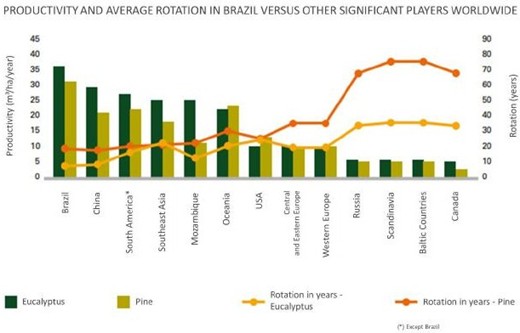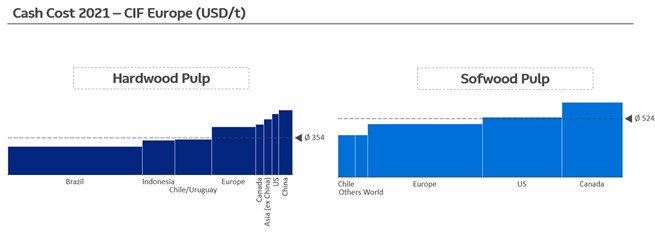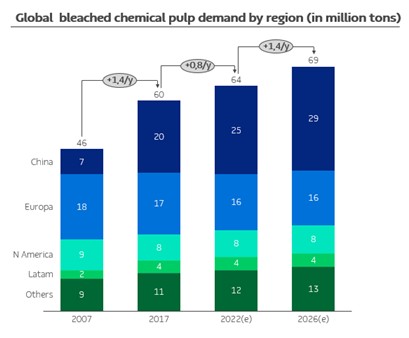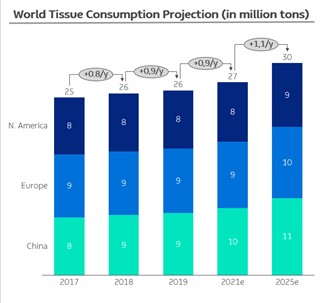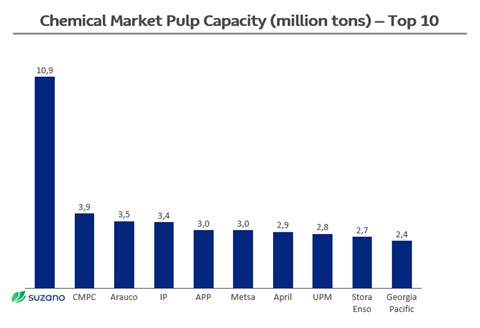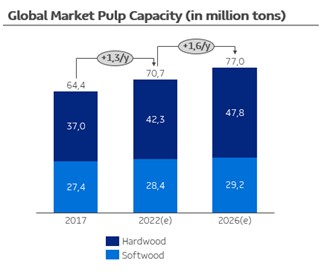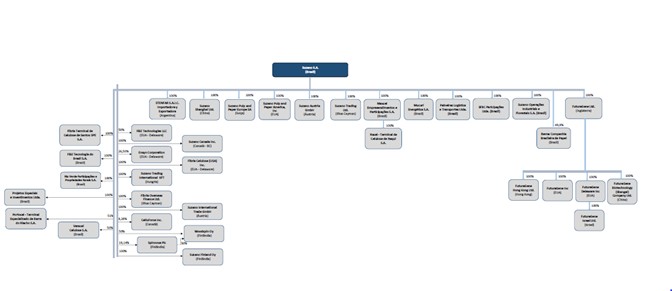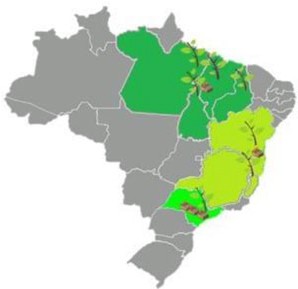Year ended December 31, 2021 compared to year ended December 31, 2020
Our net sales revenue increased 34.5%, or R$10,505.1 million, from R$30,460.3 million in the year ended December 31, 2020 to R$40,965.4 million in the corresponding period in 2021, mainly due to (i) 33% increase in pulp prices in U.S. dollars, (ii) 11% increase in paper prices in U.S. dollars, and (iii) depreciation of the average real against the U.S. dollar, partially offset by a 1.0% decrease in total sales volume when compared to the volume in the year ended December 31, 2020.
Our net sales revenue from pulp increased 35.7%, or R$9,136.9 million, from R$25,578.3 million in the year ended December 31, 2020 to R$34,715.2 million in the corresponding period in 2021, mainly due to (i) 33% increase in pulp prices in U.S. dollars, and (ii) depreciation of the average real against the U.S. dollar, partially offset by a 2.2% decrease in pulp sales volume when compared to the volume in the year ended December 31, 2020. Our net sales revenue from pulp represented 84.0% of total net sales revenue in the year ended December 31, 2020, compared to 84.7% in the corresponding period in 2021.
Our net sales revenue from pulp exports increased 35.1%, or R$8,407.6 million in 2021, from R$23,968.8 million in the year ended December 31, 2020 to R$32,376.4 million in the corresponding period in 2021, mainly due to (i) 32% increase in pulp exports prices in U.S. dollars, and (ii) depreciation of the average real against the U.S. dollar, partially offset by a 2.5% decrease in pulp exports sales volume when compared to the volume in the year ended December 31, 2020. Net revenues from pulp exports represented 79.0% of total net revenues in the year ended December 31, 2021.
Our average international net sales price of pulp in the year ended December 31, 2021 increased 32%, or US$150/ton, from US$463/ton in the year ended December 31, 2020 to US$613/ton in the corresponding period in 2021. In the domestic market, our average net pulp sales price increased 43.5%, or R$890/ton, from R$2,046/ton in the year ended December 31, 2020 to R$2,936/ton in the corresponding period in 2021.
Our net sales revenue from paper increased 28.0%, or R$1,368.2 million, from R$4,882.0 million in the year ended December 31, 2020 to R$6,250.2 million in the corresponding period in 2021. Net sales revenue from paper represented 16.0% of total net sales in the year ended December 31, 2020, compared to 15.3% in the corresponding period in 2021. The increase in net sales revenue from paper in the year ended December 31, 2021 compared to the corresponding period in 2020 is due to a combination of higher prices and higher sales volume. Net revenues from paper exports represented 4.6% of total net revenues in the year ended December 31, 2021. Our net sales revenue from paper in the domestic market increased 30.4%, or R$1.022.4 million, from R$3,358.2 million in the year ended December 31, 2020 to R$4,380.6 million in the corresponding period in 2021, impacted mainly by sales price increase.
The average international net paper sales price in 2020 increased 18%, or US$146/ton, from US$787/ton in the year ended December 31, 2019 to US$933/ton in the corresponding period in 2020. In the domestic market, the average net paper sales price increased 13%, or R$588/ton, from R$4,188/ton in the year ended in December 31, 2020 to R$4,746/ton in the corresponding period in 2021.
Cost of sales
Our total cost of sales increased 8.7%, or R$1,649.3 million, from R$18,966.3 million in the year ended December 31, 2020 to R$20,615.6 million in the corresponding period in 2021, mainly due to (i) inflation pressure on variable industrial cost and logistics cost, (ii) an increase of R$215.2 in depreciation, depletion and amortization, (iii) depreciation of the average real against the U.S. dollar, partially offset by lower sales volumes.
Gross profit
Our gross profit increased 77.0%, or R$8,855.9 million, from R$11,493.9 million in the year ended December 31, 2020 to R$20,349.8 million in the corresponding period in 2021, due to the factors mentioned above. Our gross margin in the year ended December 31, 2020 was 37.7% compared to 49.7% in the corresponding period in 2021. This increase is mainly due to increase in sales price and depreciation of the average real against the U.S. dollar benefiting net revenues.
